The Acropolis of Athens symbolizes ancient Greek civilization and is a fascinating site filled with history and mysteries. This iconic citadel, towering over Athens, showcases the ingenuity of ancient Greek architects and builders. Beyond its majestic Parthenon and the historic ruins, the Acropolis holds many lesser-known facts for your next trip to Athens.

In this post, we’ve gathered 21 fun facts about the Acropolis that you probably didn’t know. From hidden architectural secrets and ancient rituals to modern discoveries, these facts will give you a deeper appreciation of this UNESCO World Heritage site. Whether you’re planning a visit or just want to expand your knowledge, these fun facts will provide a new perspective on this ancient wonder.
1. Mythical Origin of the Acropolis
The word “Acropolis” comes from the Greek words “Akron,” meaning “highest point,” and “polis,” meaning “city.” So, it literally translates to “high city.” Aptly named, the Acropolis is situated at the highest point in Athens, offering commanding views over the city and making it a prominent and strategic location throughout its history.

Legends tell of a contest between Poseidon and Athena for the city’s patronage. Poseidon struck the ground with his trident, creating a saltwater spring, while Athena planted the first olive tree. The people chose Athena’s gift, and the city was named after her. Remarkably, an olive tree still stands near the Erechtheion, which is believed to be linked to this myth.
2. Digging Up the Past: The Real Origins of the Acropolis
While the myths surrounding the Acropolis are among the most fascinating aspects of ancient Greek culture, archaeological evidence now shows that the site was first inhabited during the Neolithic period, around 4000-3000 BCE. This means that long before the grand temples, the Acropolis was already a bustling settlement.
Fast-forward to around 1700 BCE, during the Mycenaean civilization, when a palace popped up on the hill, marking it as a power hub. But the real architectural magic happened in the 5th century BCE under Pericles’ watch. This is when big buildings like the Parthenon, the Erechtheion, and the Temple of Athena Nike were built.
These archaeological finds give us a timeline that traces the Acropolis’ journey from a prehistoric hangout to the architectural marvel we see today.
3. Birthplace of Democracy?
Athens is often hailed as the birthplace of democracy, and the Acropolis was at the heart of this revolutionary idea. Picture this: in the 5th century BCE, Athenian citizens would gather on a hill called the Pnyx, near the Acropolis, to debate and vote on important issues. This assembly, known as the Ecclesia, was like an ancient version of a town hall meeting where everyone got a say. It was a major shift from monarchies and oligarchies, giving ordinary citizens the power to make decisions.
The word “democracy” itself comes from the Greek words “demos” (people) and “kratos” (power or rule). So, democracy literally means “rule by the people.” That said, what we call democracy today is quite different. Back then, only free male citizens could vote, leaving out women, slaves, and foreigners. While, thankfully, modern democracies have evolved, allowing more people to have a voice, the Acropolis remains a symbol of where it all began.
4. Was the Acropolis Inhabited?
Yes, the Acropolis was indeed inhabited. Archaeological evidence shows that this iconic hill was home to people as far back as the Neolithic period, around 5000 BCE. During the Bronze Age, the Acropolis likely housed a palace, making it an important center of power due to its strategic location. As centuries passed, it evolved into a fortified citadel, religious center, and hub of political activity.

However, while the Acropolis was an active part of Athens, most people lived below in the vibrant residential and commercial neighborhoods of Plaka and Monastiraki. From early settlers to influential leaders, the Acropolis has seen countless generations come and go, each leaving their mark on this historic site.
5. The Acropolis Was Not Home to the Agora
It’s a common mistake to think the Agora was part of the Acropolis. The Acropolis was the religious center of Athens, while the Agora was the main public space below the Acropolis, where people met to talk politics, do business, and socialize.

Unlike the Acropolis, which had temples and religious ceremonies, the Agora had markets, shops, and political buildings. Key spots in the Agora included the Stoa of Attalos and the Bouleuterion.
6. The Parthenon: Crowning Jewel of the Acropolis
The Parthenon is arguably the most iconic structure of the Acropolis, symbolizing ancient Greek civilization and architectural brilliance. Built between 447 and 432 BCE during Athens’ golden age under the leadership of Pericles, it was dedicated to Athena, the city’s patron goddess.

It was designed by the architects Ictinus and Callicrates, with the sculptor Phidias overseeing its artistic decorations. The Parthenon was constructed using Pentelic marble, and its grandeur was meant to reflect the glory and power of Athens.
7. The Parthenon’s Optical Illusions
The Parthenon is not just a marvel of ancient architecture; it also plays tricks on your eyes! Designed with a keen understanding of optical illusions, the architects Ictinus and Callicrates incorporated subtle curves and angles to create the perfect visual experience. For instance, the columns of the Parthenon are slightly tilted inward, and they swell in the middle—a design technique known as “entasis.” This makes the columns appear straight and evenly spaced when viewed from a distance.
But that’s not all! The temple’s steps and platform are also slightly curved upward in the center. This gentle arc corrects the illusion of sagging that would happen if the steps were perfectly straight, making the Parthenon look perfectly level from afar. These ingenious adjustments ensure that the Parthenon appears flawless and balanced, showcasing the ancient Greeks’ incredible understanding of visual perception and architectural precision.
8. Secrets of the Erechtheion
The Erechtheion is one of the most intriguing structures on the Acropolis. Built between 421 and 406 BCE, it was dedicated to both Athena and Poseidon and stands out for its unique asymmetrical design. This temple blends mythology and architecture with its multiple levels and maze-like porches.

The most famous feature is the Porch of the Caryatids, where six elegant female figures, known as Caryatids, serve as columns supporting the roof. Each statue is a masterpiece of classical art, with distinct poses and expressions.

One fascinating secret of the Erechtheion is its sacred olive tree, believed to have been planted by Athena herself during her contest with Poseidon. An olive tree, thought to be a descendant of the original, still stands near the temple.
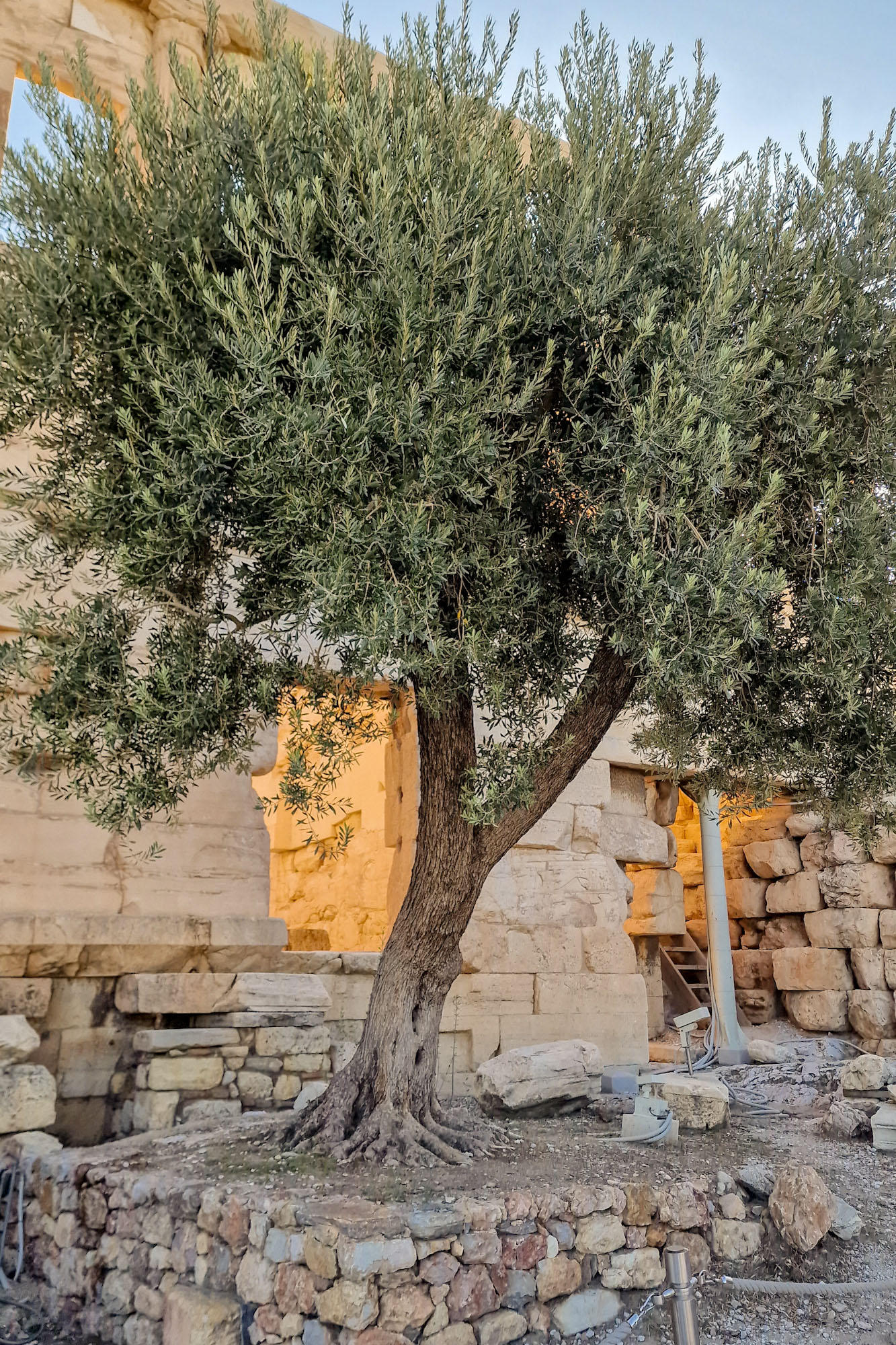
Additionally, the temple houses ancient marks on the rock, which were said to have been left by Poseidon’s trident during the same mythical contest. These elements make the Erechtheion a mystical, tangible symbol of the Greek gods.
9. The Propylaea: Gateway to the Acropolis
The Propylaea is the grand entrance to the Acropolis, serving as a majestic gateway that welcomes visitors to this ancient wonder. Constructed between 437 and 432 BCE, during the golden age of Athens under Pericles, the Propylaea was designed by the architect Mnesicles.

One of the coolest features of the Propylaea is its asymmetrical design, which was quite unusual for Greek architecture. The northern wing housed a gallery for art displays, while the southern wing provided access to the Sanctuary of Artemis Brauronia. The Propylaea wasn’t just an impressive entrance but also a multifunctional space.
10. The Temple of Athena Nike: A Tribute to Victory
Perched at the southwest corner of the Acropolis, the Temple of Athena Nike stands is a symbol of triumph and success. Built around 427-424 BCE, this temple was dedicated to Athena Nike, the goddess of victory. Its strategic position allowed it to overlook the sea and the main entrance to the Acropolis.

The temple’s elegant Ionic design, created by the architect Callicrates, features four slender columns at both the front and back, giving it a delicate and graceful appearance. Inside, it once housed a statue of Athena holding a pomegranate and a helmet, symbolizing peace and war. The friezes around the temple depict scenes of battles and victorious warriors, capturing the spirit of Athenian success in both myth and reality. The Temple of Athena Nike not only celebrates past victories but also inspires hope and confidence for the future.
11. The Acropolis: From Glory to Ruins
Over the centuries, the Acropolis has faced many changes and challenges, including the transformation of many temples into churches during the Byzantine era and later into mosques under Ottoman rule.

In 1687, the Parthenon suffered severe damage when a Venetian cannonball caused an explosion from the Ottoman ammunition stored inside. In the early 19th century, Lord Elgin removed many sculptures from the Acropolis, including parts of the Parthenon frieze, metopes, and pediments. These artifacts, now known as the Elgin Marbles, are housed in the British Museum. The Erechtheion also lost one of its Caryatids to the British Museum during this period. The Parthenon, originally adorned with beautiful sculptures by the artist Phidias, thus lost many of its treasures to these removals.
Natural disasters, such as earthquakes, have also caused structural damage over the centuries. Furthermore, exposure to the elements has led to erosion and wear on the ancient stones. In recent times, mass tourism has further contributed to the wear and tear of the Acropolis. For instance, high foot traffic and the environmental impact of many visitors have put additional strain on the ancient site.
12. The Acropolis: From Ruins to Revival
Efforts to revive the Acropolis have been ongoing because of the extensive damage over the centuries. Restoration projects have been underway since the 19th century, with a significant push in 1975 when the Acropolis Restoration Service was established. They’ve stabilized and restored many structures using advanced technology and meticulous craftsmanship. For example, they’ve replaced damaged sections of the Parthenon’s columns with new marble from the original quarry.

Modern techniques like 3D modeling and laser scanning ensure accurate restorations. So, if you visit and all you see scaffolding, don’t be upset—it’s all part of the preservation efforts. Now you have an excuse to come back to Athens!
13. Athena Parthenos: The Mighty Guardian
The Parthenon once housed an awe-inspiring statue known as Athena Parthenos, which means “Athena the Virgin.” Crafted by the renowned sculptor Phidias in 438 BCE, this grand statue was made of gold and ivory and stood about 12 meters (39 feet) tall. Athena Parthenos depicted Athena standing majestically, fully armored, holding a small statue of Nike, the goddess of victory, in her right hand and a shield in her left.

The statue, adorned with intricate details, symbolized the power and protection Athena offered to the city of Athens. The sheer size and craftsmanship of Athena Parthenos made it one of the most remarkable sculptures of the ancient world. Unfortunately, the statue has not survived to modern times, but descriptions and replicas give us a glimpse of its former glory.
14. Where Have All the Statues Gone?
The statues from the Acropolis have traveled far and wide over the centuries. Many of the original masterpieces were moved for safekeeping, as well as for “safekeeping.” Yes, British Museum, we mean you.

Many statues now reside in the Acropolis Museum in Athens. This modern museum, located at the foot of the Acropolis hill, showcases the original Caryatids from the Erechtheion and other significant sculptures.
Some statues were taken during wars and invasions and never seen again, while others were melted down to make weapons. However, some of the most notable statues, including parts of the Parthenon frieze known as the Elgin Marbles, were taken to London in the early 19th century and are now housed in the British Museum. Their “extended staycation” has sparked ongoing debates, with many advocating for these treasures to come home to Athens. Yet, the British Museum seems to be holding onto them firmly.
15. The Parthenon: Replicated Around the Globe

The Parthenon has inspired several exact replicas around the world, showcasing its timeless appeal and architectural brilliance. One of the most famous replicas is located in Nashville, Tennessee. Built in 1897 for the Tennessee Centennial Exposition, this full-scale replica serves as an art museum today and houses a detailed recreation of the statue of Athena Parthenos.

Another notable replica can be found in Edinburgh, Scotland. Known as the National Monument of Scotland, this partially completed structure on Calton Hill was intended to be a full replica of the Parthenon as a memorial to Scottish soldiers and sailors who died during the Napoleonic Wars. Sadly, funding issues left it unfinished.
16. A Global Muse
The Acropolis has a timeless influence that goes beyond its ancient roots, significantly shaping the Neoclassical architectural movement. This style emerged in the mid-18th century, heavily inspired by classical Greek and Roman architecture, with the Acropolis as a major muse.

Neoclassical buildings worldwide proudly showcase elements inspired by the Acropolis, like iconic Ionic, Doric, and Corinthian columns and symmetrical proportions. Think about the United States Capitol, the La Madeleine Church in Paris, or the Brandenburg Gate in Berlin—they all echo the grandeur and elegance of the Acropolis. These buildings prove that classic design never goes out of style.
Architects in the Neoclassical movement aimed to capture the beauty, order, and rationality of the Acropolis. This style became a symbol of cultural sophistication and intellectual triumph, celebrating ancient Greece’s enduring legacy.
17. The Acropolis in Popular Culture
The Acropolis is somewhat of an ancient world equivalent of New York City in the sense that it’s an iconic backdrop in countless movies and TV shows. As expected, it’s commonly used as a backdrop for stories featuring Grecian themes. Whether it’s a real or imagined location, this legendary site has been used in blockbuster films and TV series.
In the world of film, the Acropolis has served as an epic set in movies like 300, Clash of the Titans, the Percy Jackson series, and Disney’s Hercules. Television also often features the Acropolis in fiction shows. Shows like Xena: Warrior Princess, Knights of the Zodiac, and, more recently, Netflix’s Blood of Zeus have used the Acropolis as a backdrop for their mythical adventures.
18. The Acropolis: Athens’ Must-See Marvel
If you’re in Athens, you can’t miss the Acropolis! This ancient citadel towers over the city, offering a peek into Greece’s rich past and some of the best views around.

Visitors come to see the architectural gems like the Parthenon, the Erechtheion, and the Temple of Athena Nike. Each building has its own story, showcasing the creativity and skill of the ancient Greeks. Walking through these ruins, you can feel the weight of history all around you.
The Acropolis Museum at the base of the hill is also worth a visit. It’s packed with artifacts found at the Acropolis, giving you a deeper understanding of its history and culture. The modern displays and informative exhibits make it a great addition to your visit.
19. Avoiding the Crowds
Praying to the whole Greek Pantheon that you’ll actually be able to take a selfie without a hundred people in the background? As the top tourist spot in Athens, the Acropolis draws over 16,000 visitors daily, so planning ahead is key.

As mentioned above, the Acropolis is one of the most visited sites. To enjoy it without the crowds, timing is everything. Arriving right when it opens at 8:00 AM or visiting later in the afternoon can help you avoid the busiest times. Weekdays are generally quieter than weekends, making them a better choice for your visit.
Choosing the shoulder seasons, like spring (April to June) or fall (September to October), also means encountering fewer tourists while enjoying pleasant weather. Buying your tickets online before you go can save you time and help you avoid standing in long lines at the entrance. Additionally, the southern or eastern entrances might be less crowded than the main one.
20. Breathtaking Views Over Athens
The Acropolis isn’t just about ancient history; it also offers some of the best views over Athens. From the top of the hill, you can see a panorama that stretches from the busy streets below to the Aegean Sea. You’ll spot landmarks like the Temple of Olympian Zeus, the Odeon of Herodes Atticus, and the Athens Olympic Sports Complex.

Watching the sunset from the Acropolis is especially beautiful. The setting sun casts a warm glow over the ancient stones, creating a moment that’s both visually stunning and emotionally moving. It’s a reminder of the timeless beauty of this ancient city.
21. Best Spots to View the Acropolis
For those seeking the most stunning views of the Acropolis, there are several prime spots around Athens that offer breathtaking perspectives. Filopappou Hill, just across from the Acropolis, provides a stunning, unobstructed view, especially during sunset. Areopagus Hill, another great vantage point, offers excellent views of both the Acropolis and the city. For an elevated view, head to Lycabettus Hill, the highest point in Athens, providing a sweeping panorama of the city with the Acropolis prominently featured. Many rooftop bars and restaurants in central Athens also boast incredible views of the Acropolis, allowing you to enjoy a meal or drink while taking in the illuminated Parthenon at night.

The Acropolis Museum itself offers fantastic views, especially from its top-floor restaurant and terrace. This location combines learning about the history of the Acropolis with enjoying its beauty from a different angle. These spots ensure you get the most spectacular and unique views of the Acropolis, each offering a different perspective on this ancient marvel.
In Conclusion…
We hope you enjoyed uncovering these 21 fun facts about the Acropolis! From its prehistoric beginnings to its stunning architectural feats, the Acropolis never fails to impress. Each fun fact reveals another piece of its rich history, clever tricks, mythic legends, and breathtaking views. Keep exploring and let the Acropolis surprise and delight you even more!
Stay in the loop and plan your perfect trip to Athens and Greece to experience all the wonders for yourself!






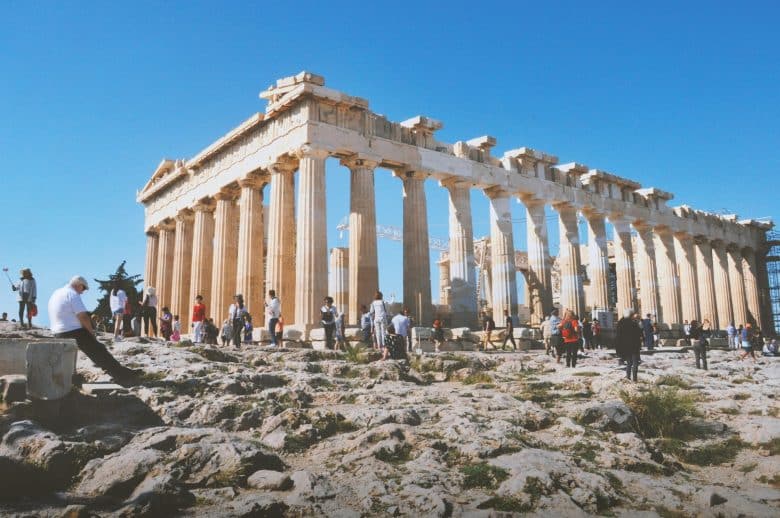
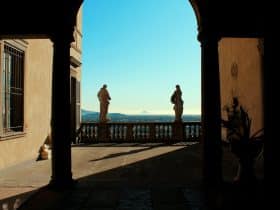

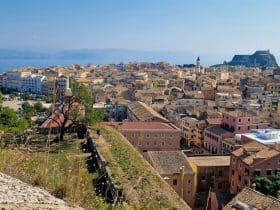
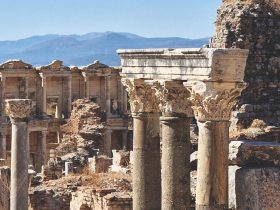




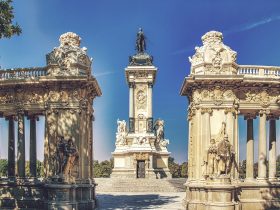
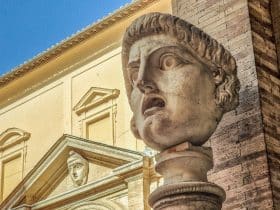
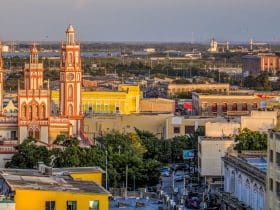


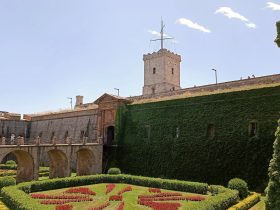
















Leave a Reply
View Comments